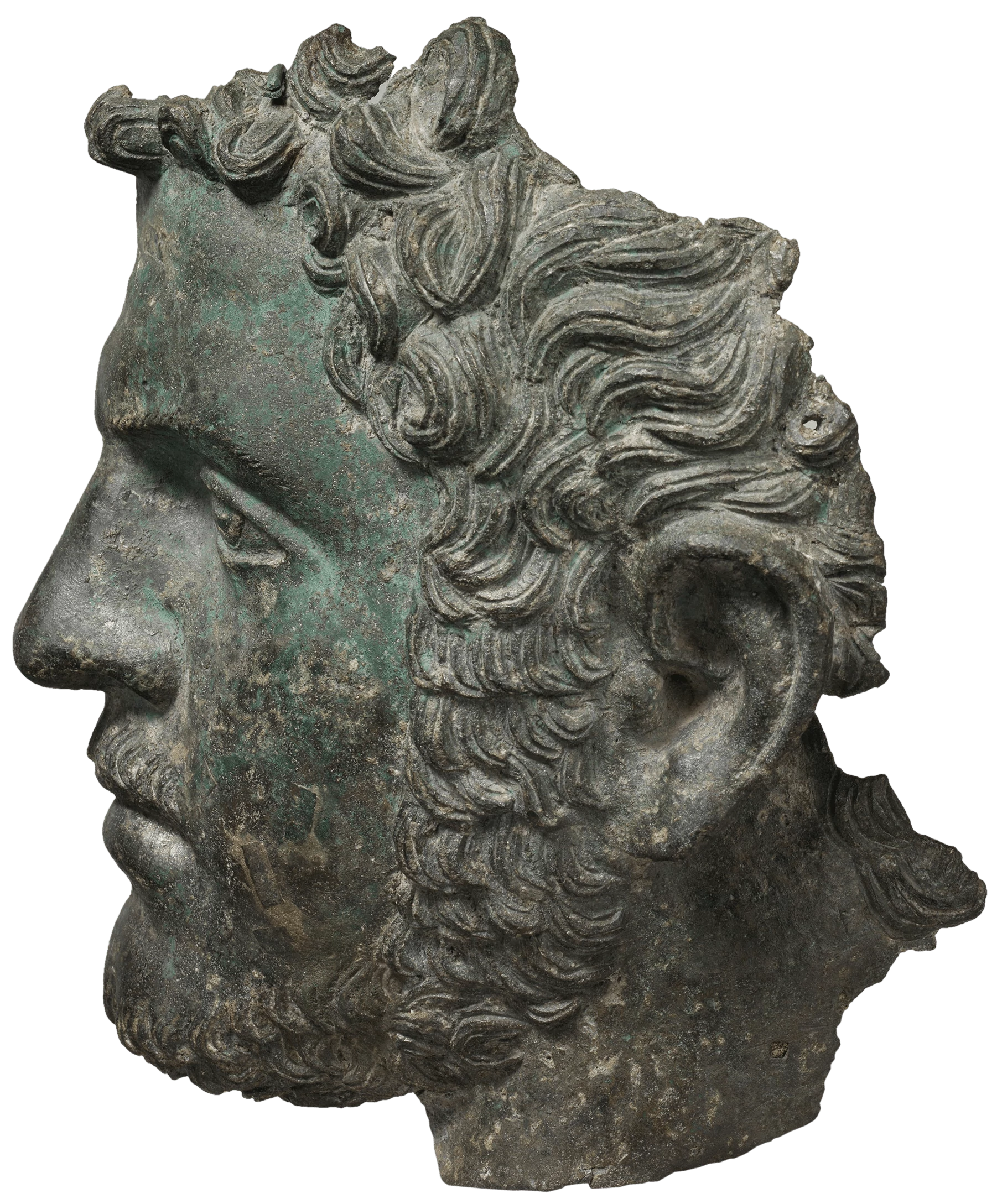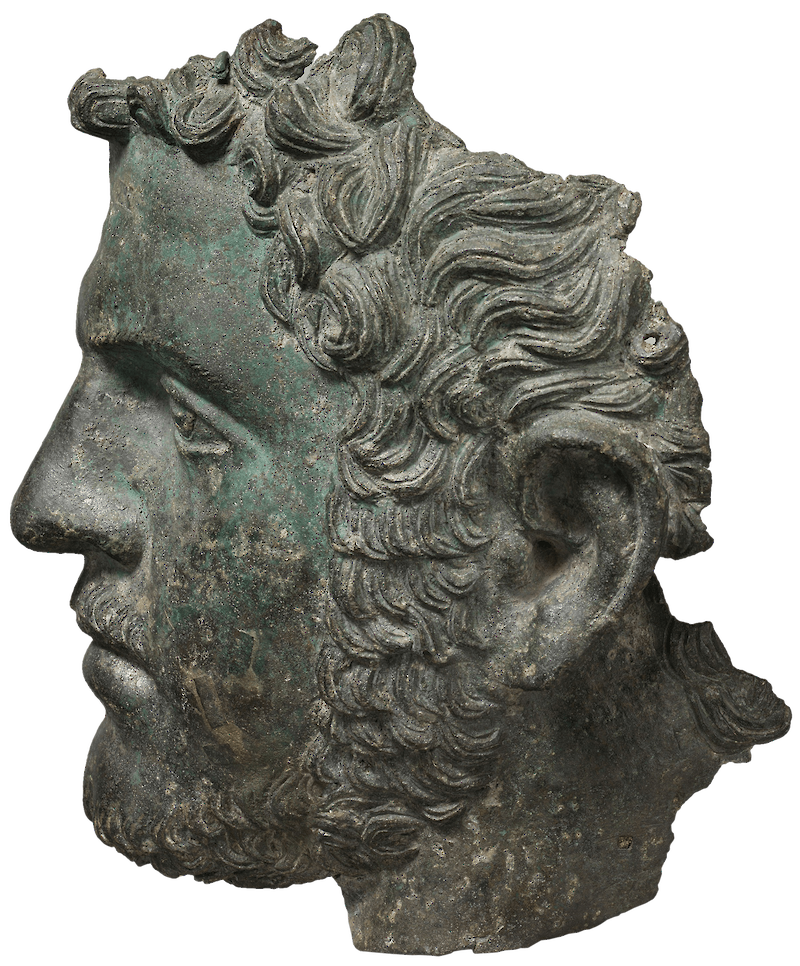


You have to admire the honesty of ancient Roman portraits. In this bronze sculpture, the Roman Emperor Caracalla looks like a square-jawed bull of a man. Caracalla is nearly always shown with his brow furrowed with the intensity unique to men who feel they're being treated unfairly by the world that hails them as king.
Caracalla was given the short end of the imperial stick. When he became emperor in 198 CE, the Roman empire was sliding toward ruin. The Gothic tribes in Germany were claiming Roman territory, and the value of currency was slipping. To add insult to injury, the newly appointed emperor had to co-run the country with his elderly father and his younger brother, until 201 CE when his father died, and he swiftly murdered his brother. After all this, Caracalla went to the German front to lead his army, who hated him so much that six years later a disaffected soldier stabbed him to death while he was taking a piss by the side of the road.
